When you open your mind to learning and growing, you discover opportunities everywhere around you. Over the past ten years, mountain biking has become a parallel universe for me to learn about myself and the world around me. As my enthusiasm for this style of learning has developed, so too has my love of mountain biking. I wanted to share my excitement with everyone around me and so I began my blog, Daisy Spoke. And my very first post in Daisy Spoke was “5 Things I’ve Learned About Life Through Mountain Biking”.
So ….. now here at last are another five ways that mountain biking has helped me to keep learning and growing as an individual!
1. Look up
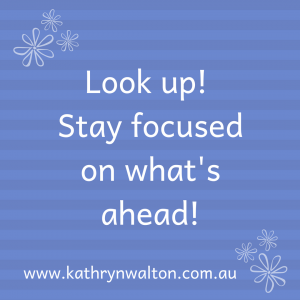 I instinctively look straight down in front of me when I ride my bike. This means I wobble a lot and react to every little lump and bump in the terrain. Having a one way staring competition with the trail right in front of me does me no favours. My imagination fixates on small details that don’t really matter. I didn’t even realise this was happening until I learnt at a coaching session the importance of looking up, to keep my eyes focused further along the track. This gets me into flow and enjoying a smoother, more connected ride. I’m still learning to trust myself, to have confidence that my brain has registered the terrain directly in front of me and that my body will know how to handle it. Every ride is a reminder to keep my sights focused ahead in all areas of my life – my work, my personal life, and my riding!
I instinctively look straight down in front of me when I ride my bike. This means I wobble a lot and react to every little lump and bump in the terrain. Having a one way staring competition with the trail right in front of me does me no favours. My imagination fixates on small details that don’t really matter. I didn’t even realise this was happening until I learnt at a coaching session the importance of looking up, to keep my eyes focused further along the track. This gets me into flow and enjoying a smoother, more connected ride. I’m still learning to trust myself, to have confidence that my brain has registered the terrain directly in front of me and that my body will know how to handle it. Every ride is a reminder to keep my sights focused ahead in all areas of my life – my work, my personal life, and my riding!
2. Absorb the bumps

The bumps and jumps are all part of the fun of mountain biking – in fact a very large part of it! But it’s taken me a long time to see it that way. Fear of falling and lack of confidence creates tension which in turn leads to a rigid framework, sore muscles and stiff joints at the end of a ride. Learning to relax my stance and go with the bumps instead of resisting them is an ongoing process. Mountain biking gives me the opportunity to experience a sense of lightness instead of a sense of lack of control. I can visualise my legs as natural built-in shock absorbers. With improved inner resilience, or bounce-ability, I’m also able to relax a bit more in life in general, to see past the hiccups, and rise above the challenges.
3. Move around
 Having ridden mostly on smooth paved surfaces like roads and bicycle paths for most of my life, it’s been a huge learning curve getting onto mountain bike trails. You need to move your weight around constantly adjusting for the ever-changing terrain. Forward and back, side to side, up and down, as well as every possible combination of these movements. The hard lesson is that if you don’t shift your weight around you can’t get up that hill, or down that steep slope, or round that tight corner. Riding can quickly turn into hike-a-bike (which isn’t much fun) or hitting the ground (which also isn’t much fun). So when I ride I try to be conscious of how I move my body – above and around my bike frame. As in life, the more you move around, the more fun you’ll have and the healthier you’ll be.
Having ridden mostly on smooth paved surfaces like roads and bicycle paths for most of my life, it’s been a huge learning curve getting onto mountain bike trails. You need to move your weight around constantly adjusting for the ever-changing terrain. Forward and back, side to side, up and down, as well as every possible combination of these movements. The hard lesson is that if you don’t shift your weight around you can’t get up that hill, or down that steep slope, or round that tight corner. Riding can quickly turn into hike-a-bike (which isn’t much fun) or hitting the ground (which also isn’t much fun). So when I ride I try to be conscious of how I move my body – above and around my bike frame. As in life, the more you move around, the more fun you’ll have and the healthier you’ll be.
4. Be present in the moment

A distracted mind is on a road to mishap. At least, that’s my experience on my mountain bike and life in general. On my bike, the terrain is constantly changing and I need to keep my wits about me at all times. When I tune my sensory antennae into the environment around me, I’m fully present in the here and now. At least that’s the theory! The reality is that sometimes when I’m riding my mind wanders off and suddenly, oops, there it is, a rut the size of the Grand Canyon about to swallow me and my bike. It’s an ongoing learning process of training my brain to come back to the present, Not only does this make me safer on my bike, the ride is heaps more fun too. The same technique applied to other areas of life can lead to more satisfying relationships, more efficient and effective business decisions, and reduced anxiety.
5. Keep trying!
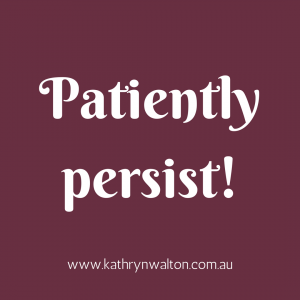 Throughout life I’ve tended to focus my energy and attention on things that come most easily to me. If I couldn’t do something perfectly the first time, I’d usually move on to the next thing fairly quickly. As far as mountain biking goes, I’d had a few short rides on unpaved paths and paddocks over the years but didn’t develop much interest in “that kind of riding”. I’d fallen off a few times so there wasn’t a lot of incentive to keep going, so my bike tended to stay in the garage most of the time. A few years ago I decided to give it another go. Maybe there was an inner knowing that it would open up a whole new world to me, that there was much more to be gained from riding than simply mountain biking skills. With the support of my Courage Coach, I learned to develop persistence and this has had a profound impact on me. I’ve discovered how valuable persistence can be when life gets tough and I feel like giving up. Persistence speaks to that fiercely determined part of my soul and keeps me trying, practising, modifying, trying again, and finding ways to bring my hopes and dreams into reality. I’ve learned that I can work really hard at things that don’t come naturally to me and to experience immense satisfaction from that!
Throughout life I’ve tended to focus my energy and attention on things that come most easily to me. If I couldn’t do something perfectly the first time, I’d usually move on to the next thing fairly quickly. As far as mountain biking goes, I’d had a few short rides on unpaved paths and paddocks over the years but didn’t develop much interest in “that kind of riding”. I’d fallen off a few times so there wasn’t a lot of incentive to keep going, so my bike tended to stay in the garage most of the time. A few years ago I decided to give it another go. Maybe there was an inner knowing that it would open up a whole new world to me, that there was much more to be gained from riding than simply mountain biking skills. With the support of my Courage Coach, I learned to develop persistence and this has had a profound impact on me. I’ve discovered how valuable persistence can be when life gets tough and I feel like giving up. Persistence speaks to that fiercely determined part of my soul and keeps me trying, practising, modifying, trying again, and finding ways to bring my hopes and dreams into reality. I’ve learned that I can work really hard at things that don’t come naturally to me and to experience immense satisfaction from that!
Read PART 1 of this article (my very first ever blog post!) “5 Things I’ve Learned About Life Through Mountain Biking” including:
- Look where you want to go
- Lean into what you most fear
- Going slow is ok
- Take a break when you need it
- Practice, practice, practice
Discovering mountain biking as life’s ultimate parallel universe in her middle age,  Kathryn Walton shares information and reflections in Daisy Spoke that connect, inspire and self-empower women to make healthy choices for themselves. She integrates her love of physical exercise, family, nature, gardening and creative arts with her professional background in mental health social work to facilitate change with individuals, groups and communities of women who are committed to living life to the full.
Kathryn Walton shares information and reflections in Daisy Spoke that connect, inspire and self-empower women to make healthy choices for themselves. She integrates her love of physical exercise, family, nature, gardening and creative arts with her professional background in mental health social work to facilitate change with individuals, groups and communities of women who are committed to living life to the full.

 So first of all, make sure you GET THE BIG ROCKS IN YOUR LIFE FIRST. They are your priorities so take steps to make sure you allow plenty of time and energy for them. Next put in your medium-sized rocks. Your small rocks go in after that and will be able to settle into the spaces between the bigger rocks. You can be more flexible with how they fit into your life. Next comes the sand. These things will be able to flow into the spaces that you have left. If there isn’t time and energy for them right now, that doesn’t matter. When things settle, they’ll have a place in your bucket once again.
So first of all, make sure you GET THE BIG ROCKS IN YOUR LIFE FIRST. They are your priorities so take steps to make sure you allow plenty of time and energy for them. Next put in your medium-sized rocks. Your small rocks go in after that and will be able to settle into the spaces between the bigger rocks. You can be more flexible with how they fit into your life. Next comes the sand. These things will be able to flow into the spaces that you have left. If there isn’t time and energy for them right now, that doesn’t matter. When things settle, they’ll have a place in your bucket once again. 
 was missing it.
was missing it. 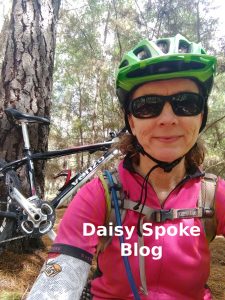 I’ve been practising and teaching this technique for a lot of years, and yet still I sometimes forget to do it when the moment arises. The thing is that on Sunday morning I DID NOTICE those fearful thoughts bouncing round my head. And guess what?
I’ve been practising and teaching this technique for a lot of years, and yet still I sometimes forget to do it when the moment arises. The thing is that on Sunday morning I DID NOTICE those fearful thoughts bouncing round my head. And guess what?  of short hills engaging my quads in an exertion that a couple of years ago would have been painful (if not impossible)! I pedalled in a higher gear than normal and found it easier than expected.
of short hills engaging my quads in an exertion that a couple of years ago would have been painful (if not impossible)! I pedalled in a higher gear than normal and found it easier than expected. 
 Daily exercise and general physical activity are crucial elements of feeling good. Just as some people might need to diligently take medication every day, I need to exercise every day. Exercise is nature’s way of stimulating the hormones which aid concentration, problem-solving, sleep, digestion, and mood. This daily dose of exercise rebalances our body’s systems resulting in wide-ranging benefits that no single medication can provide. The research is absolutely clear that regular medium to high intensity exercise can have a profound effect on health AND happiness.
Daily exercise and general physical activity are crucial elements of feeling good. Just as some people might need to diligently take medication every day, I need to exercise every day. Exercise is nature’s way of stimulating the hormones which aid concentration, problem-solving, sleep, digestion, and mood. This daily dose of exercise rebalances our body’s systems resulting in wide-ranging benefits that no single medication can provide. The research is absolutely clear that regular medium to high intensity exercise can have a profound effect on health AND happiness.
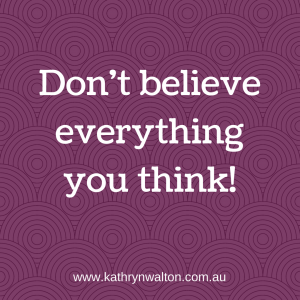 Minds are such complex things! They wield a lot of power over our emotions and our actions (including sleep). But unless you notice what’s going on in your mind, and choose how much power to give it, your thoughts, assumptions and beliefs will control you instead of the other way around. The habit of being hooked by thoughts or strongly attached to them is limiting and anxiety-provoking. The key here is to begin by simply noticing what is happening in your mind, and by doing this with curiosity and without judgement. The power is in the noticing. You’ll collect all sorts of interesting bits of information about how your mind works, what thinking patterns it gets locked into, what beliefs and assumptions are behind it all, and how all of this impacts your physiology, your behaviours and your emotions. One of my favourite sayings is “Don’t believe everything you think!” because we can learn to stand back, notice the thought and choose whether to believe it, or not.
Minds are such complex things! They wield a lot of power over our emotions and our actions (including sleep). But unless you notice what’s going on in your mind, and choose how much power to give it, your thoughts, assumptions and beliefs will control you instead of the other way around. The habit of being hooked by thoughts or strongly attached to them is limiting and anxiety-provoking. The key here is to begin by simply noticing what is happening in your mind, and by doing this with curiosity and without judgement. The power is in the noticing. You’ll collect all sorts of interesting bits of information about how your mind works, what thinking patterns it gets locked into, what beliefs and assumptions are behind it all, and how all of this impacts your physiology, your behaviours and your emotions. One of my favourite sayings is “Don’t believe everything you think!” because we can learn to stand back, notice the thought and choose whether to believe it, or not.
 Click here to read my last blog post
Click here to read my last blog post 
 example of mine was
example of mine was 
 You can collect them from songs, poems, books and social media in addition to listening to your own inner wisdom. Write them on sticky notes, in a journal or diary, print out visual reminders to stick around your home or workplace, or even use them as screen savers and wallpapers on your electronic devices. Some examples include “Just do it”, “One drop raises the ocean”, “Keep it simple”, “Just breathe”, “Stand tall”.
You can collect them from songs, poems, books and social media in addition to listening to your own inner wisdom. Write them on sticky notes, in a journal or diary, print out visual reminders to stick around your home or workplace, or even use them as screen savers and wallpapers on your electronic devices. Some examples include “Just do it”, “One drop raises the ocean”, “Keep it simple”, “Just breathe”, “Stand tall”.
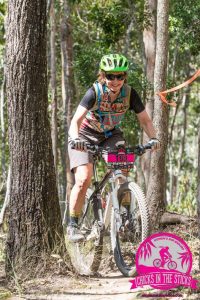 lying on the beach, your stresses trickling away into the sand beneath you) or to help you progress towards a goal (eg visualise yourself speaking in front of an audience, feeling confident, upright posture, smiling, relaxed). When I’m feeling nervous about riding my bike on a particular section of track, I stop for a few moments and picture myself riding it the way I want it to go, as if I’m watching a short video of myself successfully negotiating that section. It truly is a powerful mind-based strategy and one you can use in every area of your life.
lying on the beach, your stresses trickling away into the sand beneath you) or to help you progress towards a goal (eg visualise yourself speaking in front of an audience, feeling confident, upright posture, smiling, relaxed). When I’m feeling nervous about riding my bike on a particular section of track, I stop for a few moments and picture myself riding it the way I want it to go, as if I’m watching a short video of myself successfully negotiating that section. It truly is a powerful mind-based strategy and one you can use in every area of your life. the mix. And to help you keep your strategies in play, I’ve created a free printable for you. “I ask myself …” is a beautiful keepsake of the helpful questions listed above. You can
the mix. And to help you keep your strategies in play, I’ve created a free printable for you. “I ask myself …” is a beautiful keepsake of the helpful questions listed above. You can 


 Kathryn Walton shares information and reflections in Daisy Spoke that connect, inspire and self-empower women to make healthy choices for themselves.
Kathryn Walton shares information and reflections in Daisy Spoke that connect, inspire and self-empower women to make healthy choices for themselves.
 Then the immense relief of being able to brush the flies off my face with my hands, take a deep breath, and remind myself we all have a place in this world. As I pedalled on up the hill, I hoped to find a fast downhill section of trail on the other side, the perfect set-up to outrun my nemesis.
Then the immense relief of being able to brush the flies off my face with my hands, take a deep breath, and remind myself we all have a place in this world. As I pedalled on up the hill, I hoped to find a fast downhill section of trail on the other side, the perfect set-up to outrun my nemesis.
 further afield to step into our beautiful Australian bush country! As I’ve traversed the trail over the past few months, I’ve sometimes stopped to look at the rock garden and visualise myself riding through the narrow gaps between the rocks without clunking my pedals. I knew that I would need to develop a lot more skill, line accuracy, confidence and power to ride this section. Basically I’d been riding it so slowly that I didn’t have enough power to get over the craggy rocks. Although I enjoyed my brief little fantasies of riding effortlessly over and around the rocks, I certainly didn’t have much hope that I’d ever actually be able to do it.
further afield to step into our beautiful Australian bush country! As I’ve traversed the trail over the past few months, I’ve sometimes stopped to look at the rock garden and visualise myself riding through the narrow gaps between the rocks without clunking my pedals. I knew that I would need to develop a lot more skill, line accuracy, confidence and power to ride this section. Basically I’d been riding it so slowly that I didn’t have enough power to get over the craggy rocks. Although I enjoyed my brief little fantasies of riding effortlessly over and around the rocks, I certainly didn’t have much hope that I’d ever actually be able to do it.  about something that was upsetting me. I wasn’t very mindful of where I was or what I was doing. Suddenly I realised I’d already ridden through the rock garden! I hadn’t dabbed my foot, I didn’t jab my pedals, and the smooth flowy feeling hit the pit of my stomach and came out of my mouth with a loud shriek, my previous upset forgotten in a moment of elation as I realised what I’d done. I’d accidentally got it right!
about something that was upsetting me. I wasn’t very mindful of where I was or what I was doing. Suddenly I realised I’d already ridden through the rock garden! I hadn’t dabbed my foot, I didn’t jab my pedals, and the smooth flowy feeling hit the pit of my stomach and came out of my mouth with a loud shriek, my previous upset forgotten in a moment of elation as I realised what I’d done. I’d accidentally got it right! Today as I walk the same trail and peer along the rock garden, I can clearly see the line that I need to take on my bike. The rocks seem so much smaller than before, the gaps between them seem so much wider, and I realise just how powerful the images and thoughts in our minds can be.
Today as I walk the same trail and peer along the rock garden, I can clearly see the line that I need to take on my bike. The rocks seem so much smaller than before, the gaps between them seem so much wider, and I realise just how powerful the images and thoughts in our minds can be.
 3. Pace out that tricky section of MTB trail that gets you stuck. As you become more familiar with the tricky technical bits, you’ll be able to find a line and visualise yourself riding it. A great set-up for the next time you ride.
3. Pace out that tricky section of MTB trail that gets you stuck. As you become more familiar with the tricky technical bits, you’ll be able to find a line and visualise yourself riding it. A great set-up for the next time you ride. a route on a map, create a budget, make some bookings. You know you want to!
a route on a map, create a budget, make some bookings. You know you want to! live with? Show them a bit of love and maybe at the same time you could check out that new trail in preparation for the next time you go riding!
live with? Show them a bit of love and maybe at the same time you could check out that new trail in preparation for the next time you go riding! 13. Indoor training. Interval training on the stationary bike to your favourite rock music that gets your legs spinning, your heart pumping, and the time flying by. Bruce Springsteen’s my all time favourite. Nothing beats a good workout to the tunes of “Come on up for the Rising”, “Waiting on a Sunny Day”, “Rosalita”, and “Born to Run”. You’ll feel the difference in your fitness next time you have a real dinky-di outdoors-y MTB ride!
13. Indoor training. Interval training on the stationary bike to your favourite rock music that gets your legs spinning, your heart pumping, and the time flying by. Bruce Springsteen’s my all time favourite. Nothing beats a good workout to the tunes of “Come on up for the Rising”, “Waiting on a Sunny Day”, “Rosalita”, and “Born to Run”. You’ll feel the difference in your fitness next time you have a real dinky-di outdoors-y MTB ride! There’s a recognised association between wellness and outdoor activity. Simply being surrounded by nature is a step towards feeling more relaxed. With the sunshine stimulating our brains and enhancing our mood, there’s no better all-natural way to manage stress. Even just a few minutes outdoors is beneficial, so if you don’t have enough time for a long ride ….. have a short ride! With a bit of fresh air and sunshine, you’ll blow away the cobwebs in your mind and reconnect with those things that bring you joy.
There’s a recognised association between wellness and outdoor activity. Simply being surrounded by nature is a step towards feeling more relaxed. With the sunshine stimulating our brains and enhancing our mood, there’s no better all-natural way to manage stress. Even just a few minutes outdoors is beneficial, so if you don’t have enough time for a long ride ….. have a short ride! With a bit of fresh air and sunshine, you’ll blow away the cobwebs in your mind and reconnect with those things that bring you joy. Sedentary behaviour is considered a modern danger to our health with risks so serious that the problem has been compared to that of smoking. Physical activity refers to general movement throughout the day, so it has a broader meaning than ‘exercise’. Bike riding is a low impact activity and therefore a great choice for people of all ages and abilities. MTB in particular gets your whole body moving as you navigate rougher terrain. You can jump on your mountain bike to commute to and from work on paved surfaces, or hit the trails that are purpose built for recreational use. Cross country, downhill, enduro, freestyle, trials, or whatever is your preference ….. the main idea is to get your body moving.
Sedentary behaviour is considered a modern danger to our health with risks so serious that the problem has been compared to that of smoking. Physical activity refers to general movement throughout the day, so it has a broader meaning than ‘exercise’. Bike riding is a low impact activity and therefore a great choice for people of all ages and abilities. MTB in particular gets your whole body moving as you navigate rougher terrain. You can jump on your mountain bike to commute to and from work on paved surfaces, or hit the trails that are purpose built for recreational use. Cross country, downhill, enduro, freestyle, trials, or whatever is your preference ….. the main idea is to get your body moving. Formal or structured meditation practices are very helpful for developing skills of attention, concentration, relaxation and mood management. Some people find it very challenging to stay still enough to engage with this process. Whether you meditate in this way or not, you can still reap the benefits of mindfulness practices by fully bringing your attention and awareness to your bike riding. Visualise your attention as a narrow laser beam and focus on your actions and your surroundings using your senses – in particular notice what you see, hear, smell and feel. Notice the fluid movement of your body in response to the terrain, the smell of the pine trees, the breeze on your face, the physical features of the trail in front of you. When thoughts about work or other issues arise, simply refocus on your ride. Before you know it, you’ll have let go of some of those things you’ve been worrying about and given your brain a well-earned rest.
Formal or structured meditation practices are very helpful for developing skills of attention, concentration, relaxation and mood management. Some people find it very challenging to stay still enough to engage with this process. Whether you meditate in this way or not, you can still reap the benefits of mindfulness practices by fully bringing your attention and awareness to your bike riding. Visualise your attention as a narrow laser beam and focus on your actions and your surroundings using your senses – in particular notice what you see, hear, smell and feel. Notice the fluid movement of your body in response to the terrain, the smell of the pine trees, the breeze on your face, the physical features of the trail in front of you. When thoughts about work or other issues arise, simply refocus on your ride. Before you know it, you’ll have let go of some of those things you’ve been worrying about and given your brain a well-earned rest. What are the 3 best things that you’ve discovered about mountain biking?
What are the 3 best things that you’ve discovered about mountain biking?